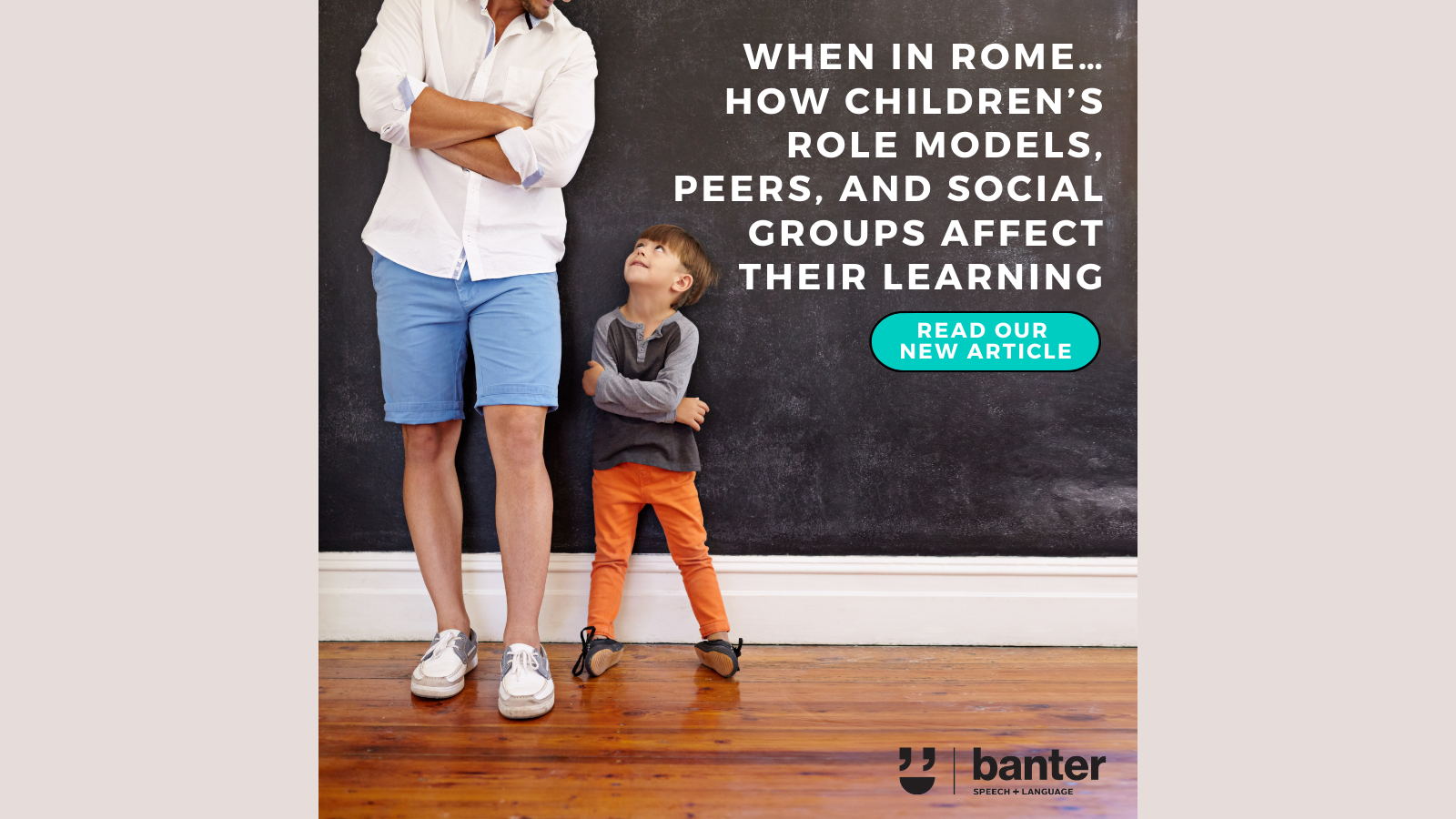When in Rome…How children’s role models, peers, and social groups affect their learning
Why do I drive on the right hand side of the road when I’m in Beijing? How did I figure out hostel booking procedures in Weimer when I don’t speak German? How did I work out how to toast politely at my first Singapore wedding? Why do I watch YouTube clips before attempting to fix things around the house? Why do I answer the phone the way I do? Why am I so tempted to download and play Wordle instead of writing this blog?
Because – like most humans – I watch and copy what others do: especially when learning complex skills or navigating new social situations.
Learning by watching others
Way back in 1971, the father of Social Learning Theory, Albert Bandura made this observation:
Of the numerous stimuli that influence how people will behave at any moment, none is more ubiquitous or effective than the actions of others. People applaud when others clap, they laugh when others laugh, they exit from social functions when they see others leaving, and on countless other occasions their behaviour is prompted and channeled by modelling stimuli.
Learning by watching others helps most of us to benefit from others’ knowledge without suffering the same costs or taking the same risks. It’s often faster and safer to learn from others’ experiences than by pure trial and error (or rewards and punishments).
Imagine trying to learn a complex set of behaviours, like how to swim, drive a car, build a Twitter or Instagram following, or practice speech pathology without real world examples, teachers, mentors and other role models to watch and learn from. You’d drown, crash, and be cancelled and sued before you mastered the basics!
It’s much safer and more efficient to learn the ropes by watching others’ examples – including their mistakes.

Who do we copy? Social learning strategies and biases
Humans use various strategies to decide who to copy. Most of us are biased in how we go about it. For example, we tend to copy:
- the majority: Humans have a strong conformity bias. It helps us to adapt and conform to local cultures, like driving on the right side of the road in China; and acting appropriately at a wedding ceremony conducted in a language you don’t know;
- our parents and other senior relatives: e.g. I learned how to shave from my father, and to answer the phone from my mother;
- popular, high status or ‘prestigious’ individuals: This is the basis of the ‘influencer’ and celebrity endorsement industry. (I’m particularly vulnerable to products and services endorsed by my favourite podcasters.) As I look at my Twitter feed, I seem to follow many high profile, academic and clinical speech pathologists and other professionals;
- people who are similar to us, e.g. in age and gender. This explains why peer pressure at school is such an issue; and
- members of social, professional and other groups to which we belong, including our friends, colleagues, and other people who share our interests – a key reason I’m tempted to try out Wordle, despite my commitment to finishing this blog!
In practice, people use multiple strategies when deciding who and what to copy, often without much conscious thought.
Imitation in speech and language learning
Bandura thought that some complex behaviours can only be learned (at least in the early stages) through others’ models, including early speech and language skills in your first language. Of course, just watching someone speak isn’t enough. Speech and language are complex skills that take a lot of practice, including with gestures, babbling, experimenting with new consonants, and first word attempts.
Many speech pathologists use imitation techniques in their speech and language therapy for children with speech and language difficulties. For example:
- imitation is an evidence-based technique taught to parents and used to stimulate late-talkers’ early speech and language skills (see Language Tip of the Week: Imitation);
- many speech pathologists – including me – use imitation training to introduce new speech sounds and grammatical forms (e.g. consonants in words, regular past tense verbs -ed, regular plural -s, compound and complex sentences), and to increase children’s production of words and sentences. This type of imitation training involves two main parts:
- the child hears lots of models of the target form (e.g. a new word-form or sentence form); and
- has a go at imitating them. In our practice, we focus a lot of effort on encouraging our clients to produce the new targets because the evidence tells us production attempts are an important part of effective speech and language therapy (e.g. Eisenberg et al., 2020). (We also ‘recast’ imperfect production attempts to provide clients with additional models. Many children learn to repeat modelled sentences quickly, and to learn new language structures and rules by imitation (you can read more about these techniques here); and
- social language modelling by a child’s peers, which is one reason play-based social language therapy is so effective at increasing the social learning of children aged 6-11 years of age with language and attention disorders. (You can read more about peer-mediated, play-based social language therapy in this article: Play-based, peer-mediated pragmatic language intervention for school-aged children).
Your child’s role models and social groups affect their social learning
Copying others is not always good for us – especially if we copy someone acting in dangerous or unhealthy ways, or someone whose beliefs are untrue or whose acts are dishonest. The groups to which we belong can be very influential on individual behaviour. Recent research, for example, suggests that:
- most people prefer to copy their own group members’ behaviours even when the groups to which they were initially assigned were randomly generated, completely arbitrary, and virtually identical!
- strong in-group copying biases at times override individuals’ stated beliefs; and
- individuals tend to observe in-group members more, and to evaluate in-group members as more reliable, warm, and competent than people in other groups (Montrey et al., 2021).
Parents are right to be concerned about who their child seeks to copy, and the behaviours of members of their child’s social groups. Most parents are naturally ‘on guard’ to the risks of their child falling in with the wrong crowd. Having said that, many older children, teenagers and young adults learn to make their own decisions, although they differ in the degree to which their behaviour is susceptible to others’ influence. Not all role models are equally influential in all situations.
Practical suggestions
In practice, children (like most of us) tend to imitate more than one person, and to imitate different models in different situations. Jim Rohn, a famous motivational speaker, said that we are the average of the five people we spend the most time with. If he’s right, one way to increase your opportunities to model healthy behaviours may be simply to spend more time together.
Peer groups can be highly influential, especially for teenagers and young adults in social situations. Parents, carers, teachers, health professionals, coaches, and other adults in leadership positions role can also provide useful social language and behaviour models for children, especially in home, education, and work contexts.
It’s perfectly normal for children, teenagers, and young adults to learn complex social skills from their peers. Parents can help by:
- getting to know the families of their child’s peers;
- encouraging their children to play and socialise with their friends and to participate in semi-structured cooperative social activities like team sports, music groups, and part-time work opportunities that involve frequent interactions with the general public; and
- helping their child to explore their interests and to develop their skills with reputable mentors and other like-minded people who can model healthy social and other skills.
For some more specific suggestions, check out this free resource.
Principal sources:
Montrey, M., & Shultz, T. R. (2021). Copy the In-group: group membership trumps perceived reliability, warmth, and competence in a social learning task. Psychological Science. December 2021;9567976211032224. doi: 10.1177/09567976211032224. (Online ahead of print.) https://journals.sagepub.com/doi/10.1177/09567976211032224
Eisenberg, S.L., Bredin-Oja, S.L, & Crumrine, K. (2020). Use of Imitation Training for Targeting Grammar: a Narrative Review. Language, Speech & Hearing Services in Schools, 51: 205-225.
Steve Stewart-Williams. The Ape that Understood the Universe: How the Mind and Culture Evolve. (2018), Cambridge University Press.
Bandura, A. (1971). Social Learning Theory. General Learning Press, NY, NY.
Related articles:
- Play-based, peer-mediated pragmatic language intervention for school-aged children
- Not about ‘fixing’: using the ‘F-Word Framework’ to support children with communication disorders and their families
- Language Tip of the Week: Imitation
- How do babies and toddlers choose their first words?
- Important update: In what order and at what age should my child learn to say his/her consonants? FAQs
- “He was such a good baby. Never made a sound!” Late babbling as a red flag for potential speech-language delays
- Resources to learn grammar: using auditory bombardment to improve kids’ expression and grammar skills








